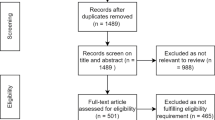Abstract
Cyberbullying (CB) is an important issue that has received a fair amount of attention in the past decade. However, little attention has been paid to exploring young people’s Internet usage and CB behaviors and the relationships between the two. The purpose of this study was to research these two types of behaviors and how they are related. For this purpose, 2327 Chinese youths aged 9–22 years (the mean age was 14.6) were invited to participate in our study. The participants answered a youth Internet usage behavior questionnaire and completed a cyberbullying questionnaire. Based on the surveys, we found that of the technology we surveyed, the participants mainly used mobile phones (72.07%); the most popular social platform among the participants was QQ (78.1%); they spent most of their time online watching movies and cartoons (28.1%), and mobile phone games were their favorite type of game (38.4%). In terms of CB, 6.2% of the participants were bullies, and the proportion of boys (69.9%) was higher than that of girls (30.1%). Our results also showed that the participants who used the Renren social network platform, participated in celebrity forums and played online games more frequently engaged in CB. In contrast, participants who used the Sina microblog, watched video news and read online magazines were less likely to engage in CB. Based on our results, several implications and suggestions for future research are presented.
Similar content being viewed by others
References
Akcan, G., & Ozturk, E. (2017). The investigation of predictors of cyberbullying and cyber victimization in university students. Forensic Research & Criminology International Journal, 4(5), 1–4.
Aricak, T., Siyahhan, S., Uzunhasanoglu, A., Saribeyoglu, S., Ciplak, S., Yilmaz, N., et al. (2008). Cyberbullying among Turkish adolescents. Cyberpsychology & Behavior, 11(3), 253–261.
Borg, M. G. (1999). The extent and nature of bullying among primary and secondary schoolchildren. Educational Research, 41(2), 137–153.
Boulton, M. J., & Underwood, K. (1992). Bully/victim problems among middle school children. British Journal of Educational Psychology, 62(1), 73–87.
Calvete, E., Orue, I., Estévez, A., Villardón, L., & Padilla, P. (2010). Cyberbullying in adolescents: Modalities and aggressors’ profile. Computers in Human Behavior, 26(5), 1128–1135.
Chen, G. (2011). 网络欺凌:青少年网民的新困境 [Cyberbullying: Adolescents’ new predicament]. 青少年犯罪问题 [Issues on Juvenile Crimes and Delinquency], 4, 41–46.
Chen, L., & He, X. (2008). 百度贴吧的粉丝文化[Fans Culture of Baidu Bar]. 青年记者[Youth Journalist], 35, 66.
Chen, M., Zhang, Y., Zhang, S., & Qi, D. (2016). 移情对中学生网络欺凌的抑制:性别、年级的调节作用 [Empathy inhibits middle school students’ cyberbullying: gender and grade’s effect]. 中小学心理健康教育[Mental Health Education in Primary and Secondary School], 1, 8–11.
China Internet Network Information Center (CNNIC) (2015). A Report on Adolescents’ Internet usage behavior in China in 2014. Retrieved from http://www.cnnic.net.cn/hlwfzyj/hlwxzbg/qsnbg/201506/P020150603434893070975.pdf.
Dong, J. J., Hwang, W. Y., Shadiev, R., & Chen, G. Y. (2018). Implementing On-call Tutor system for facilitating peer-help activities. Transactions on Learning Technologies. https://doi.org/10.1109/TLT.2018.2818139.
Gámez-Guadix, M., Villa-George, F., & Calvete, E. (2014). Psychometric properties of the Cyberbullying Questionnaire (CBQ) among Mexican adolescents (pp. 65–80). Perspectives on Bullying: Research on Childhood, Workplace, and Cyberbullying.
Gao, Z. J., & Xu, Y. (2017). 青少年网络欺凌的历史回放及现实预防[The historical replays of adolescent cyber-bullying and practical prevention]. 青年发展论坛[Youth Development Forum], 3, 60–71.
Kowalski, R. M., & Limber, S. P. (2008). Electronic bullying among middle school students. Journal of Adolescent Health, 41(6), S22–S30.
Li, Q. (2006). Cyberbullying in schools: a research of gender differences. School Psychology International, 27(2), 157–170.
Li, J. (2009). 青少年网络欺凌问题与防范对策[The problem and precautions of Adolescents’ Cyberbullying]. 中国青年研究[China Youth Study], 8, 25–28.
Li, X. (2013). 微博仪式互动的社会心理学研究[Research on Social Psychology of Ritual Interaction in Sina microblog] (Doctoral dissertation). Retrieved from CNKI dissertation.
Liu, L. Q., Xiao, F., & Rao, Z. H. (2012). Natures of the Cyber-bullying among middle school students. Chinese Journal of School Health, 8, 19.
Palermiti, A. L., Servidio, R., Bartolo, M. G., & Costabile, A. (2017). Cyberbullying and self-esteem: an Italian study. Computers in Human Behavior, 69, 136–141.
Reynolds, B. L., & Wang, S. L. (2014). An investigation of the role of article commendation and criticism in Taiwanese university students’ heavy BBS usage. Computers & Education, 78, 210–226.
Shadiev, R., & Huang, Y. M. (2016). Facilitating cross-cultural understanding with learning activities supported by speech-to-text recognition and computer-aided translation. Computers & Education, 98, 130–141.
Shadiev, R., Hwang, W. Y., & Huang, Y. M. (2015). A pilot study: Facilitating cross-cultural understanding with project-based collaborative learning in an online environment. Australasian Journal of Educational Technology, 31(2), 123–139.
Shi, B. (2011). Peer group socialization of aggression in early adolescence: Social status, group characteristics, and individual differences. (Doctoral dissertation). Available from Dissertations and Theses database. (UMI No. AAI3408760).
Sun, S., & Deng, S. (2016). 青少年的网络欺凌:成因、危害及防治对策 [Adolescents’ Cyberbullying: causes, harm and precautions]. 现代传播 中国传媒大学学报[Modern Communication- Journal of Communication University of China], 38(2), 144–148.
Xiong, L. (2015). 移动互联网时代社会化媒体的弱关系社交研究[The study of weak socialization of social media in the age of mobile internet]. 新闻世界 [News World], 9, 217–218.
Zhang, Y., Zhang, S., Liu, L., & Lv, X. (2015). 中学生传统与网络欺凌结构特征的比较研究[The comparative study of the structure of middle school students’ traditional bullying and cyberbullying]. 现代中小学教育[Modern Primary and Secondary Education], 8, 58–62.
Zhao, J., & Jiang, M. (2012). 无锡市青少年网络应用现状调查研究[Investigation on adolescents’ network application status in Wuxi]. 现代教育技术[Modern Educational Technology], 22(6), 35–38.
Zheng, R., Xing, Y., & Duan, J. L. (2017). 青少年网络欺凌行为流行及干预现状[The current situation of adolescent cyber-bullying and intervention]. 中国学校卫生[Chinese Journal of School Health], 7, 955–958.
Acknowledgements
The authors acknowledge the financial support from the National Social Science Foundation of China (Project No. 13BRK026) and Research Institute of Moral Education of Nanjing Normal University.
Author information
Authors and Affiliations
Corresponding author
Appendix: adolescents’ network behavior questionnaire
Appendix: adolescents’ network behavior questionnaire

Rights and permissions
About this article
Cite this article
Li, J., Luo, C., Lin, Y. et al. Exploring Chinese Youth’s Internet Usage and Cyberbullying Behaviors and their Relationship. Asia-Pacific Edu Res 27, 383–394 (2018). https://doi.org/10.1007/s40299-018-0397-y
Published:
Issue Date:
DOI: https://doi.org/10.1007/s40299-018-0397-y




